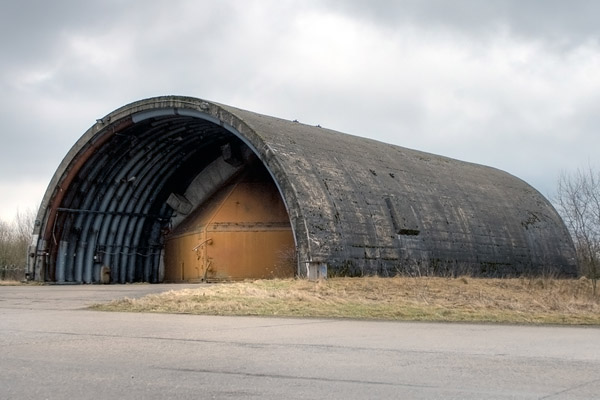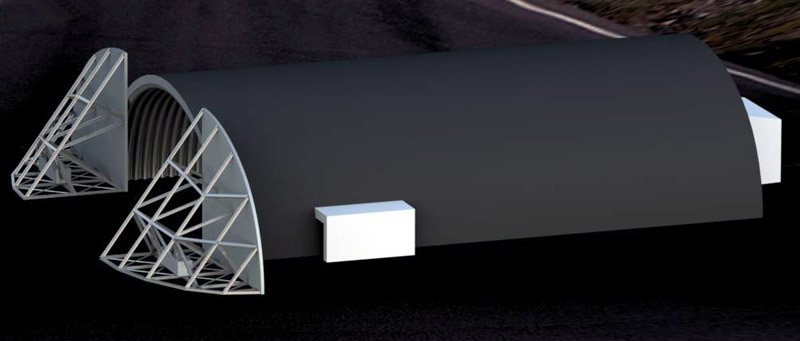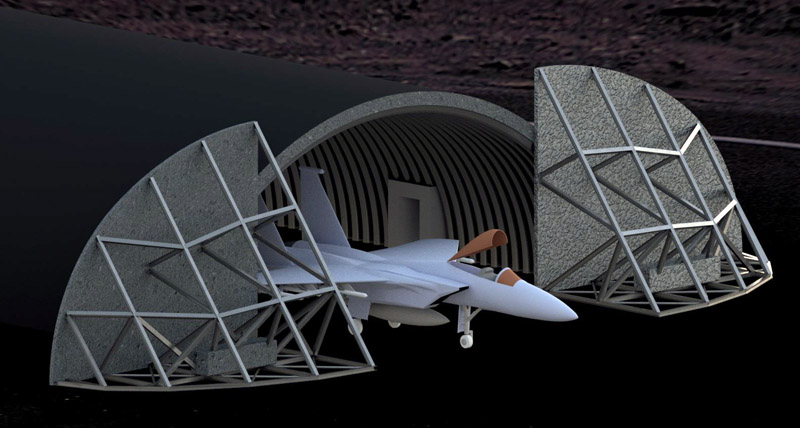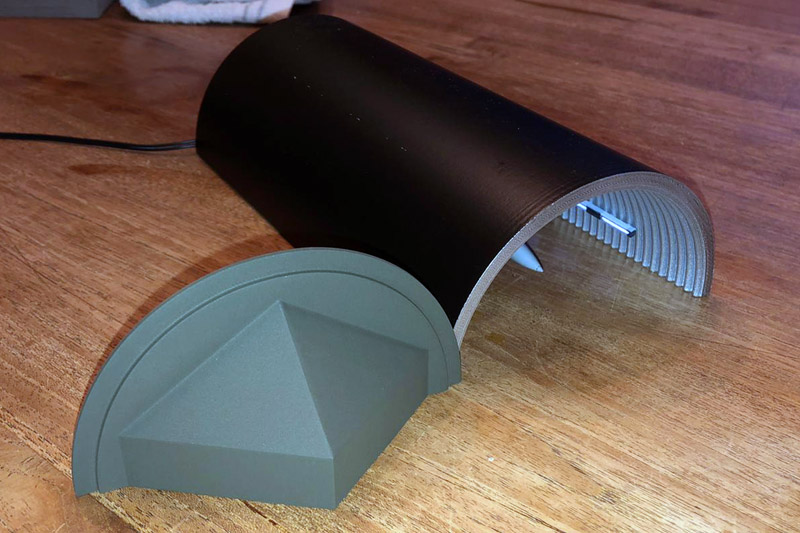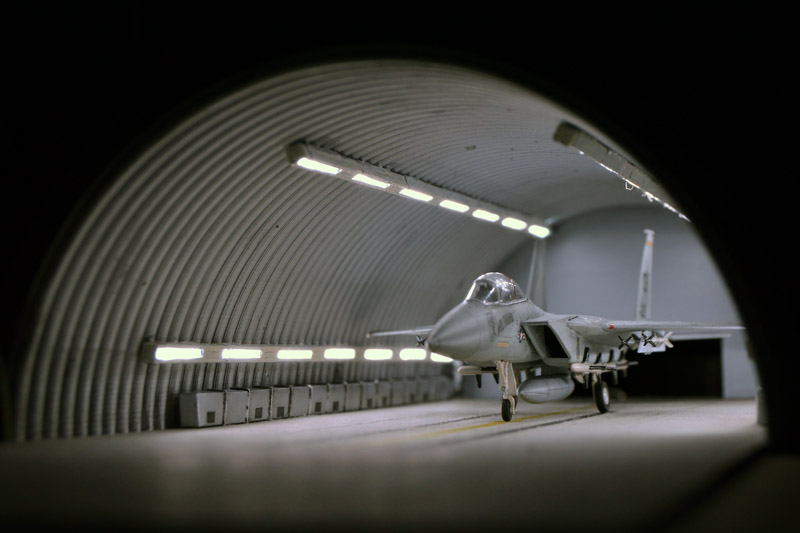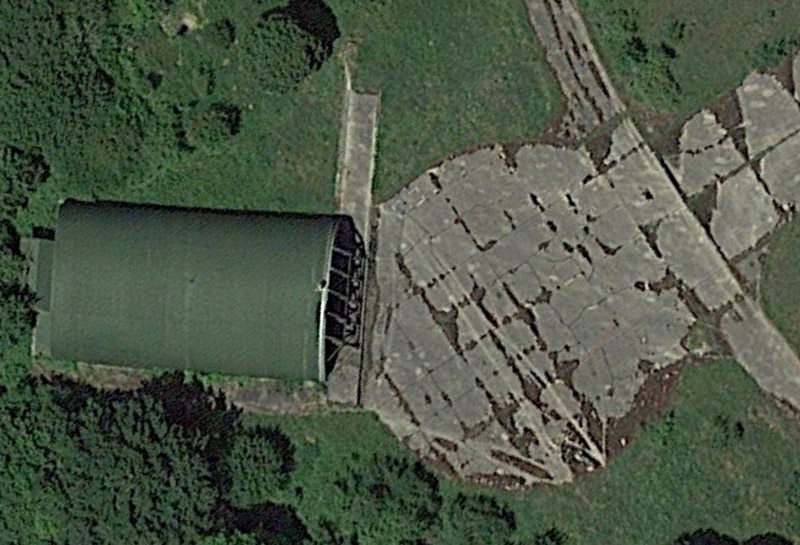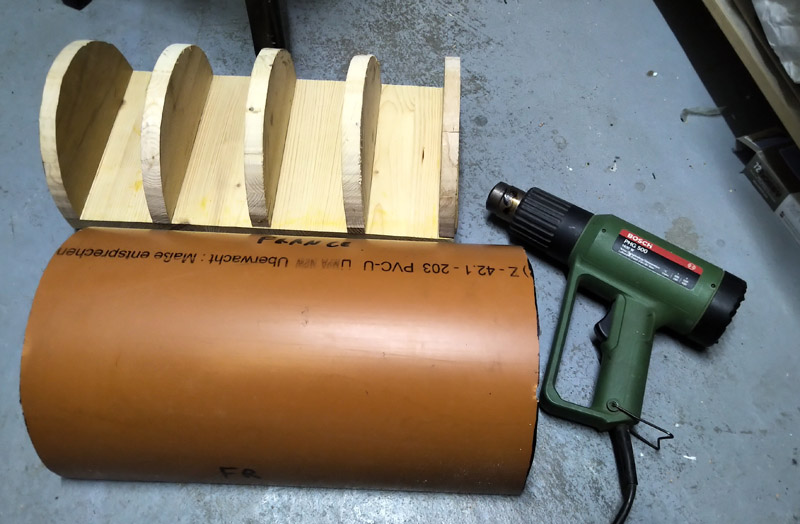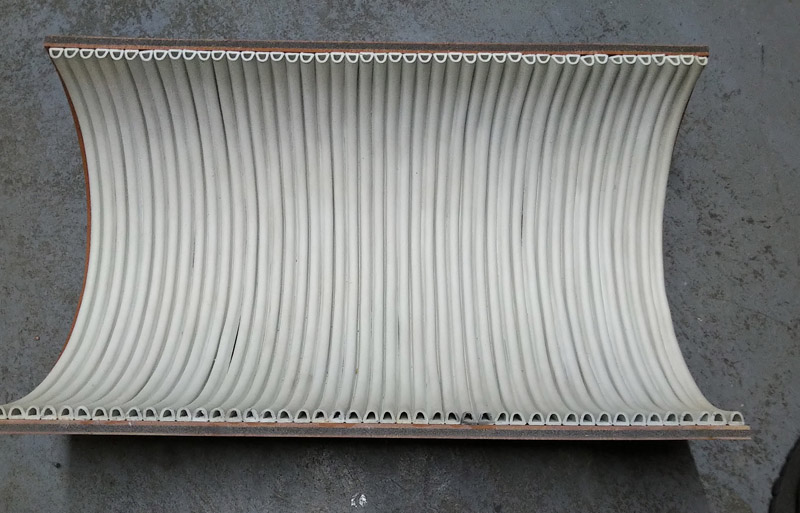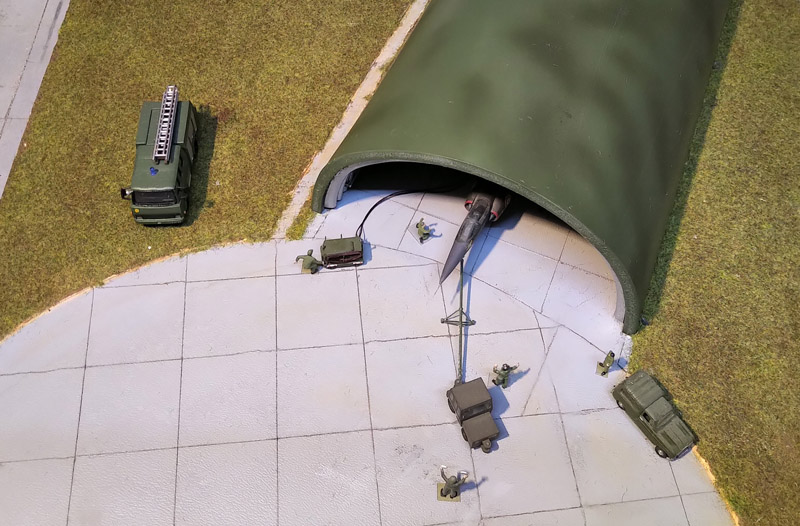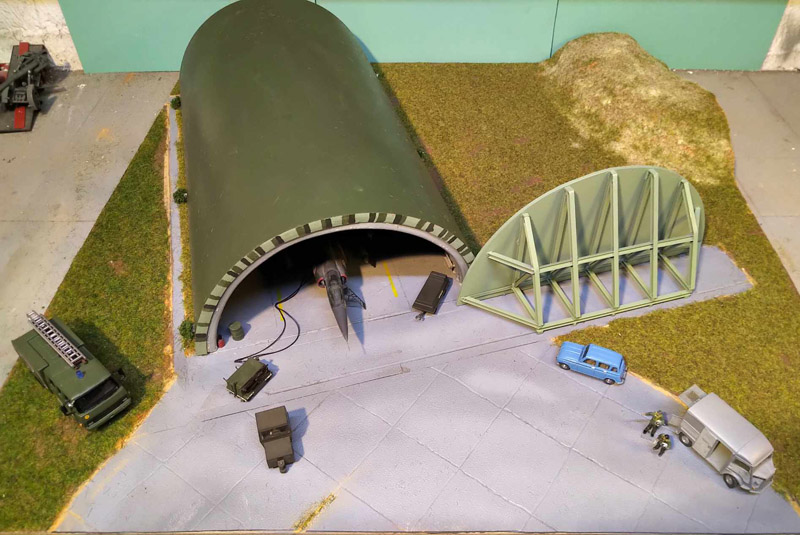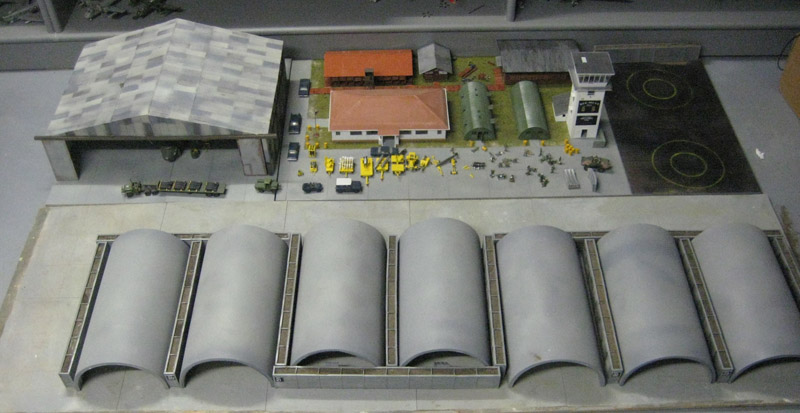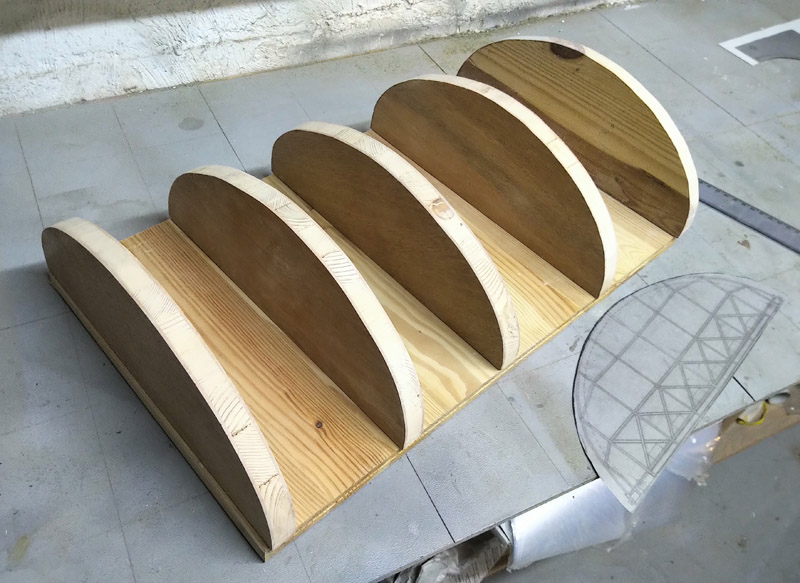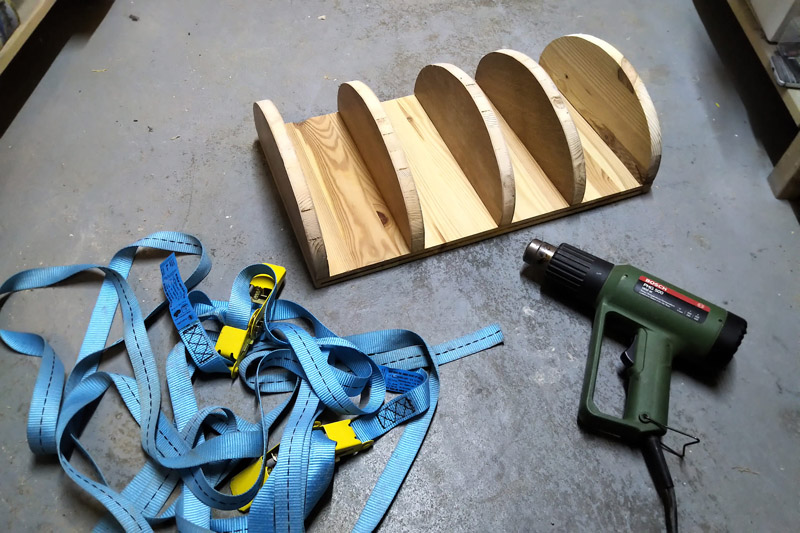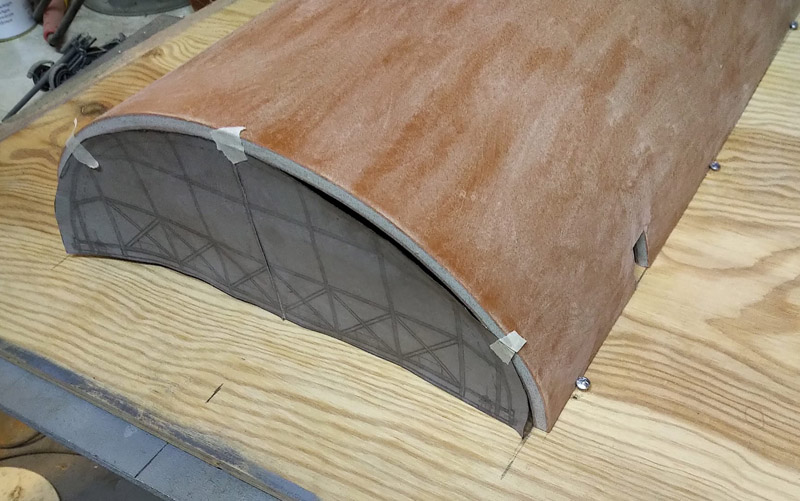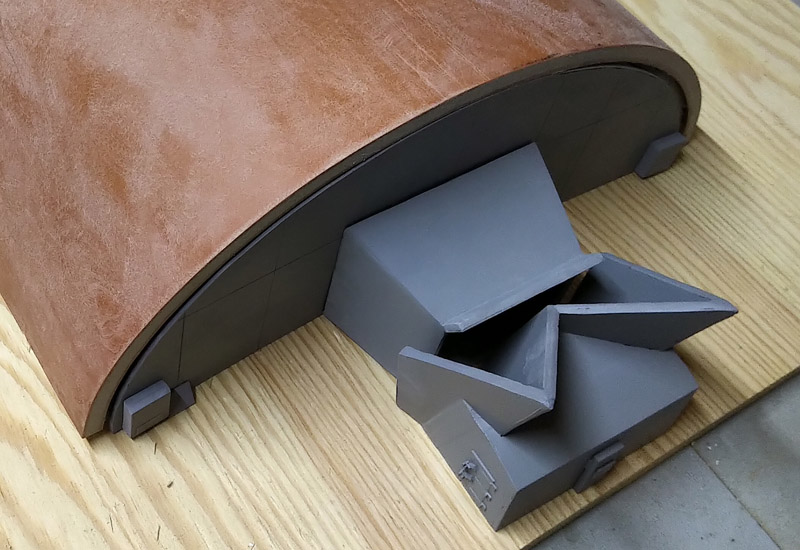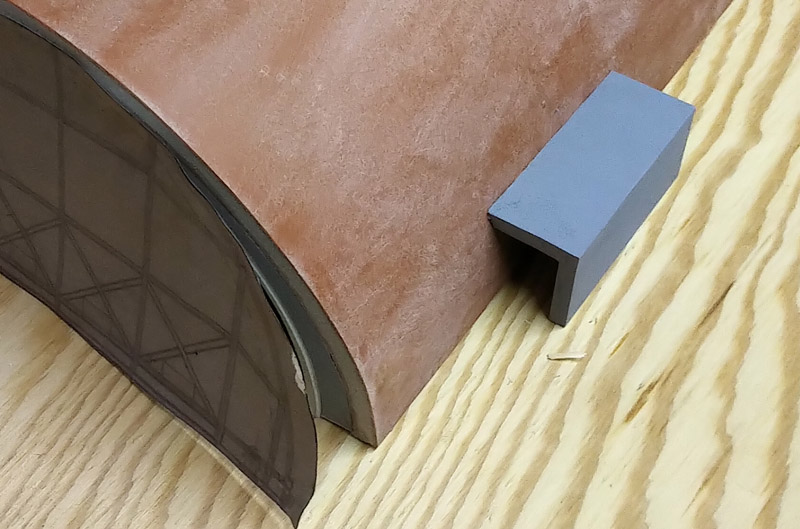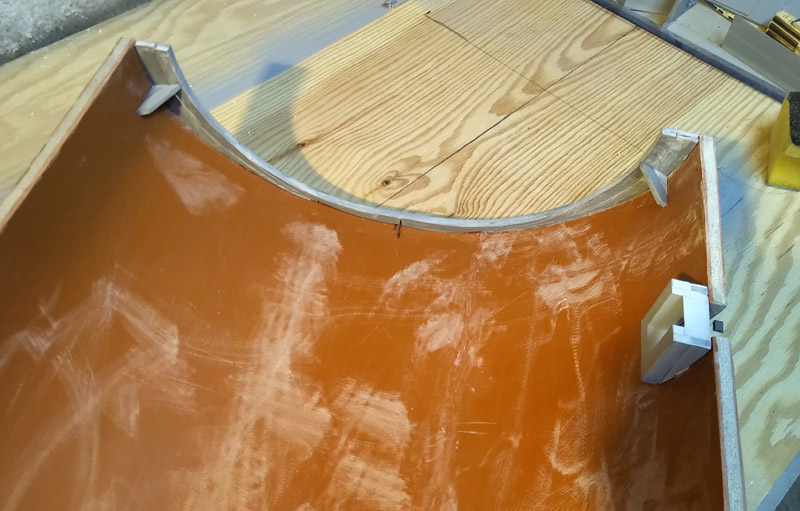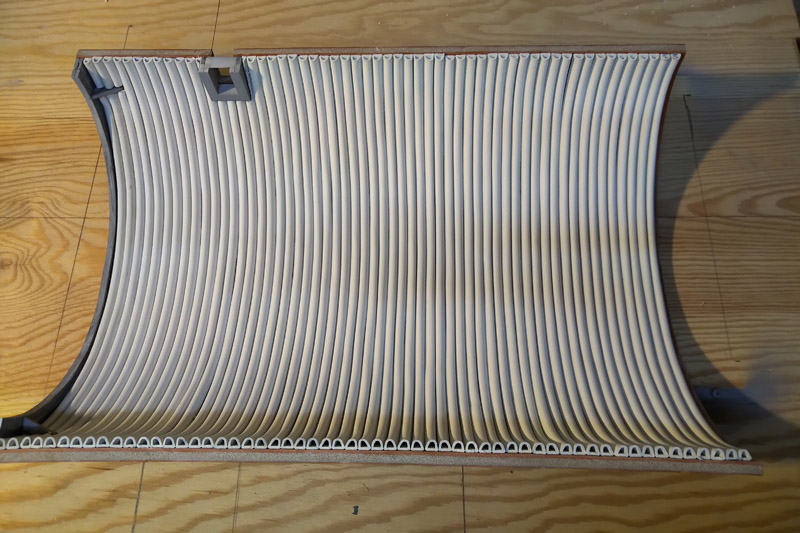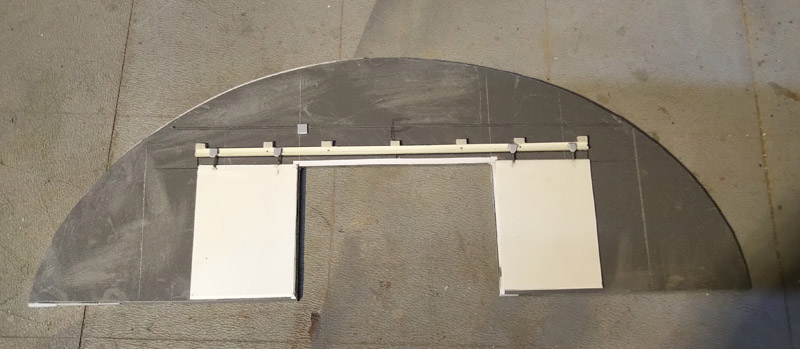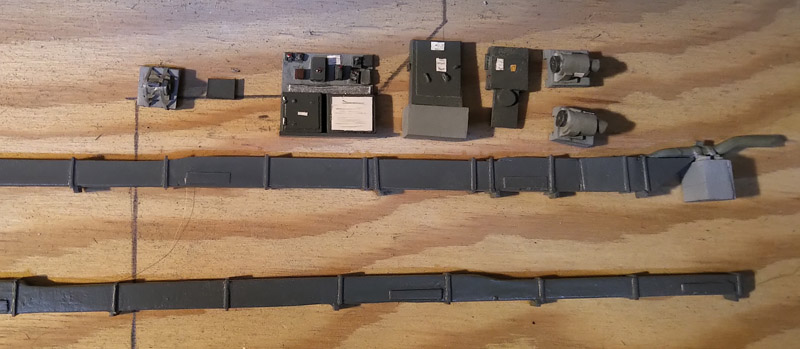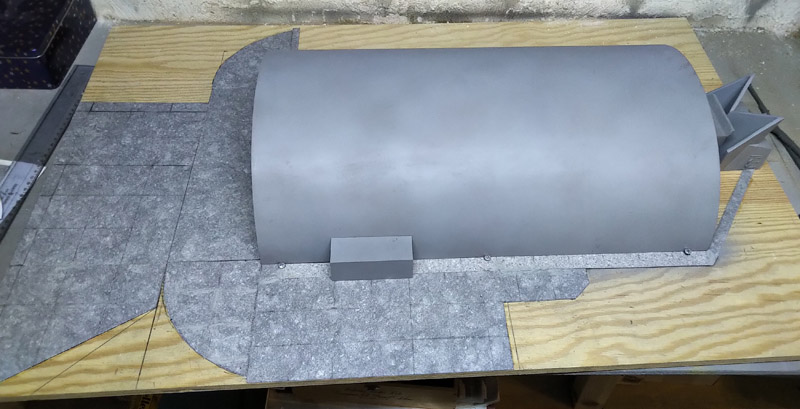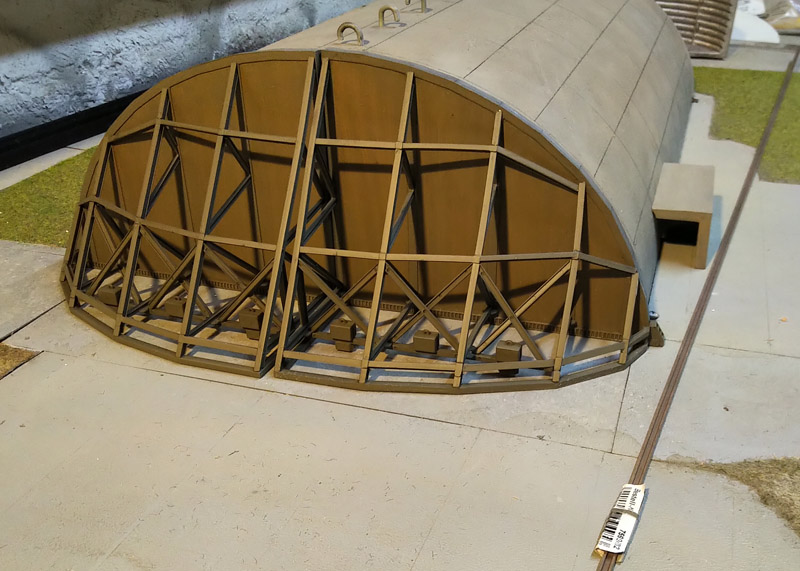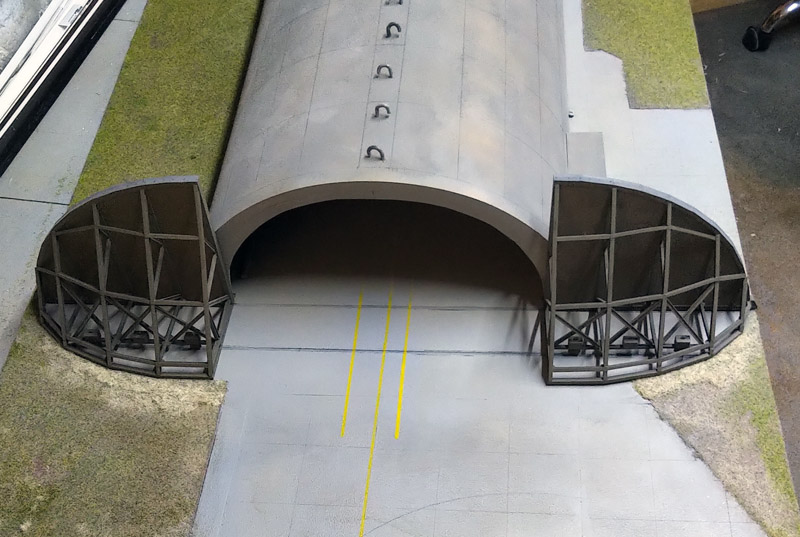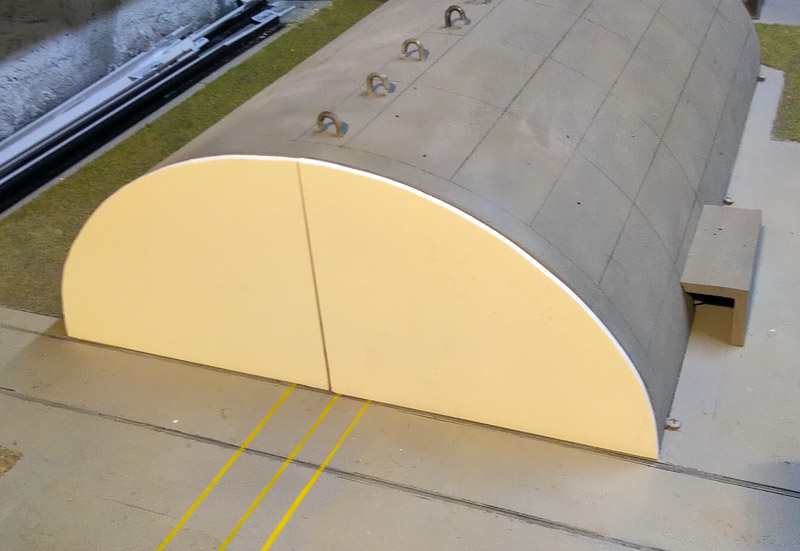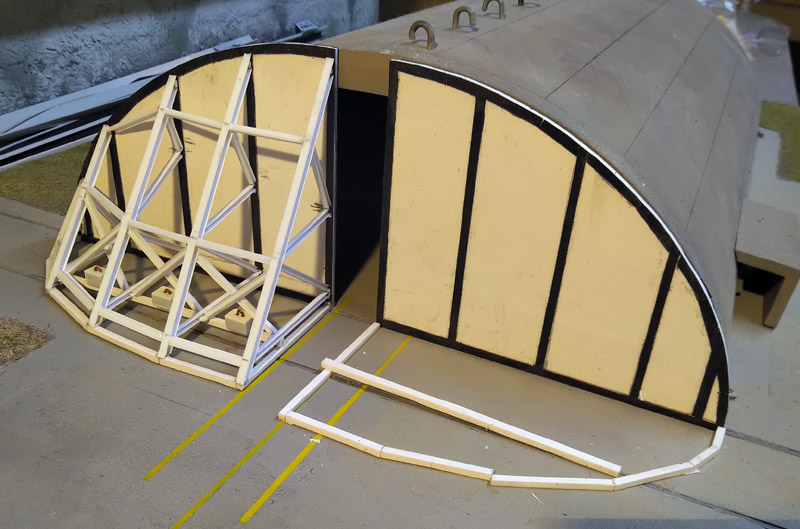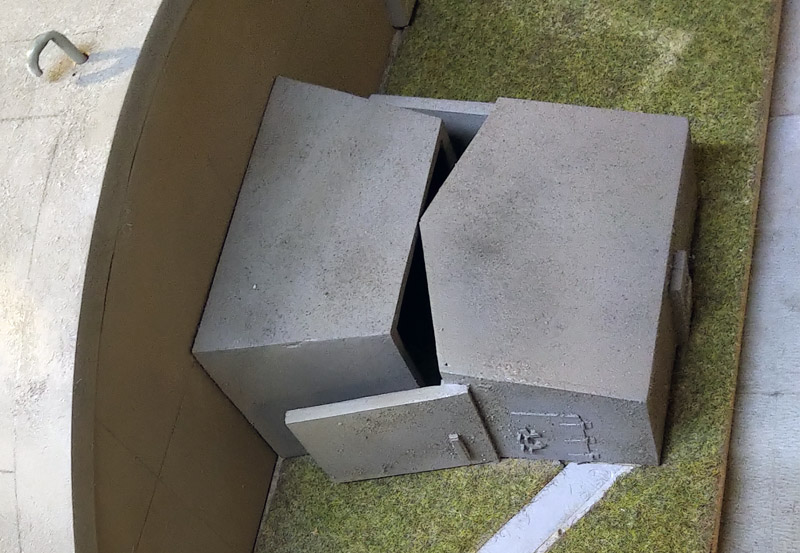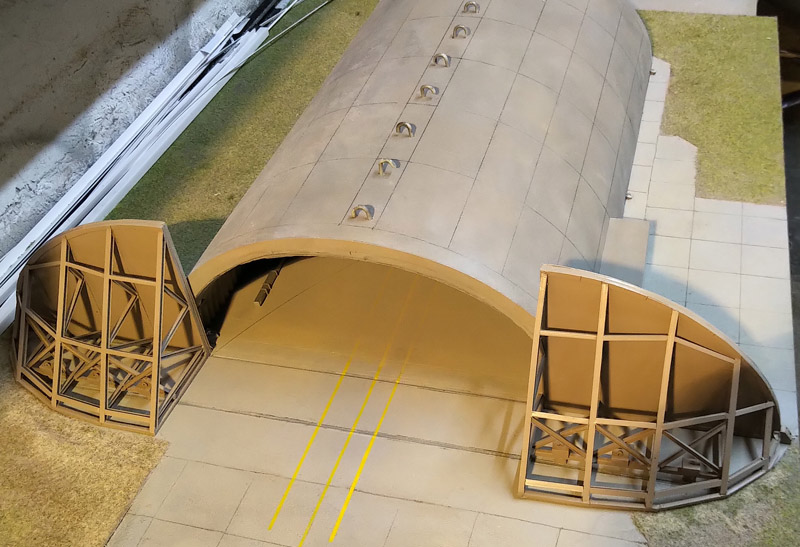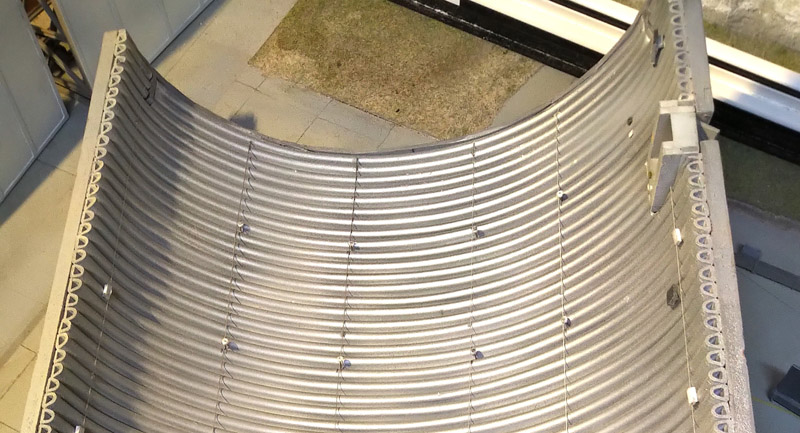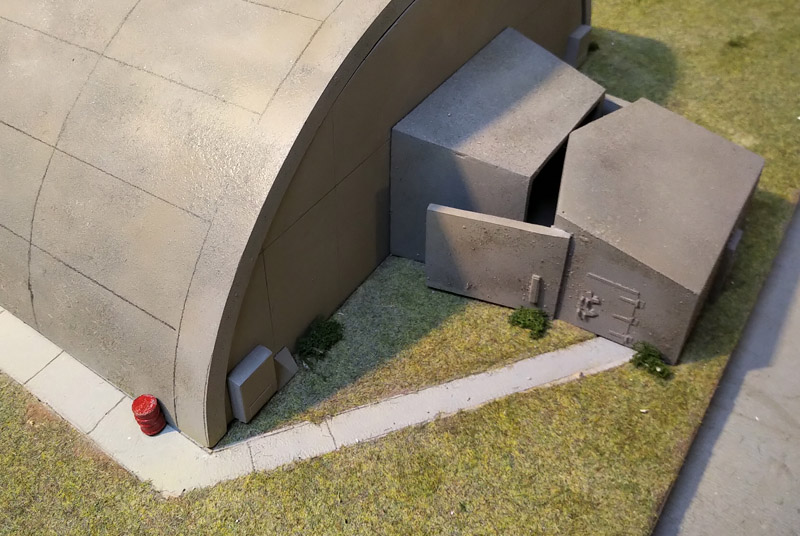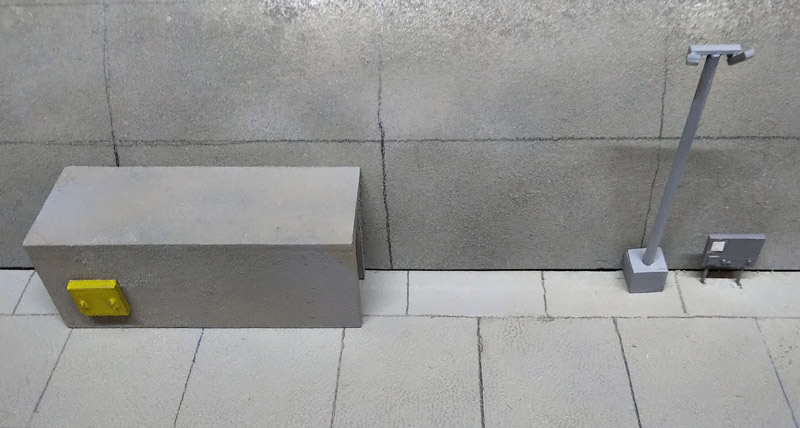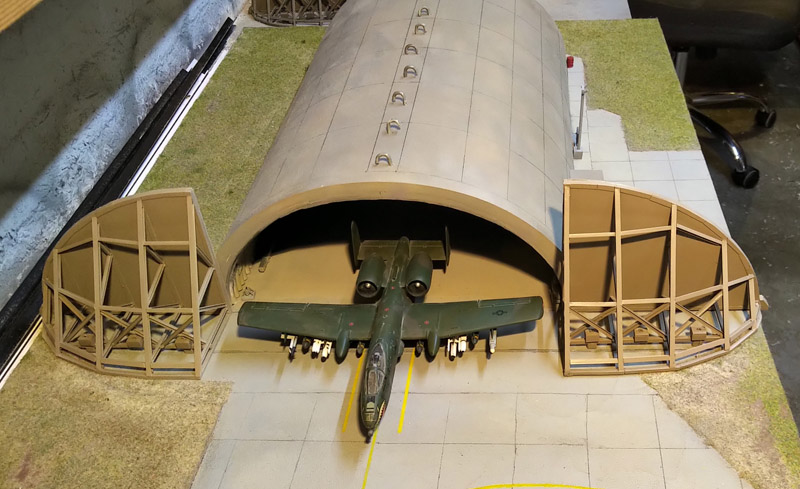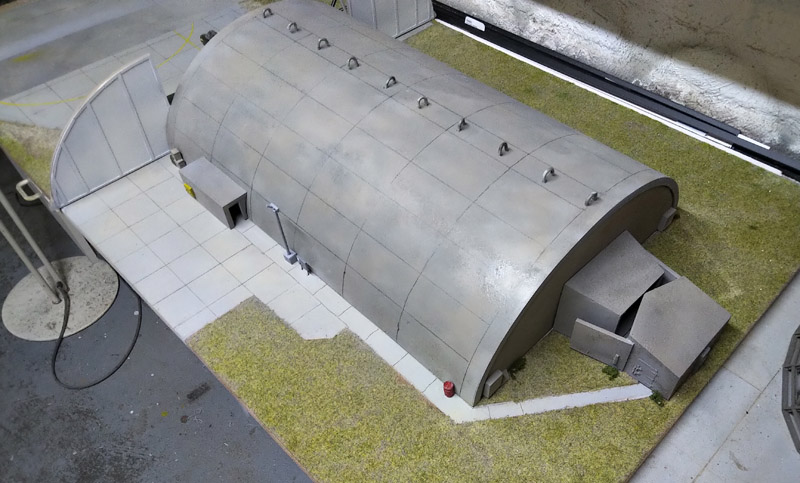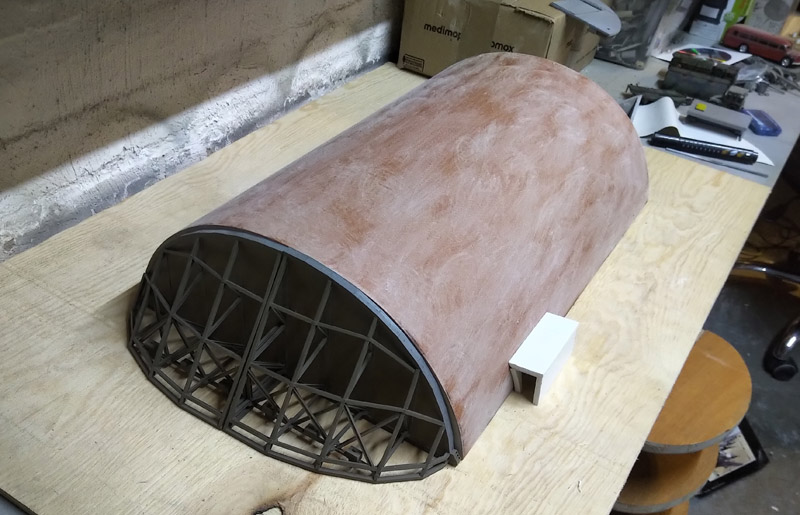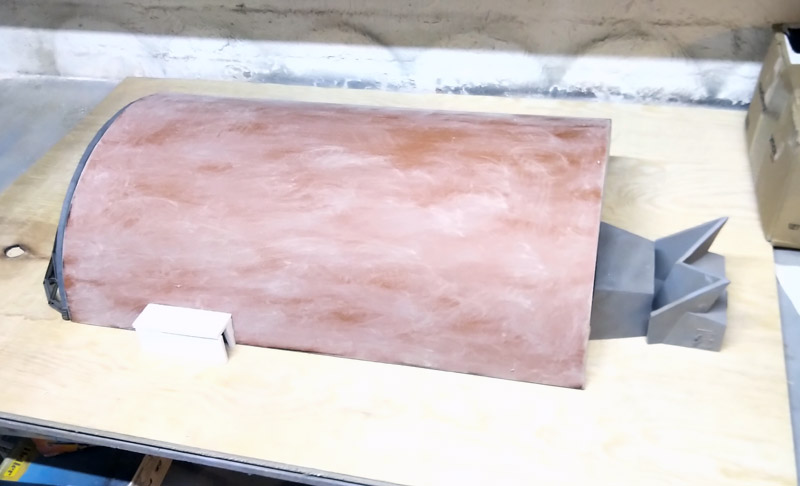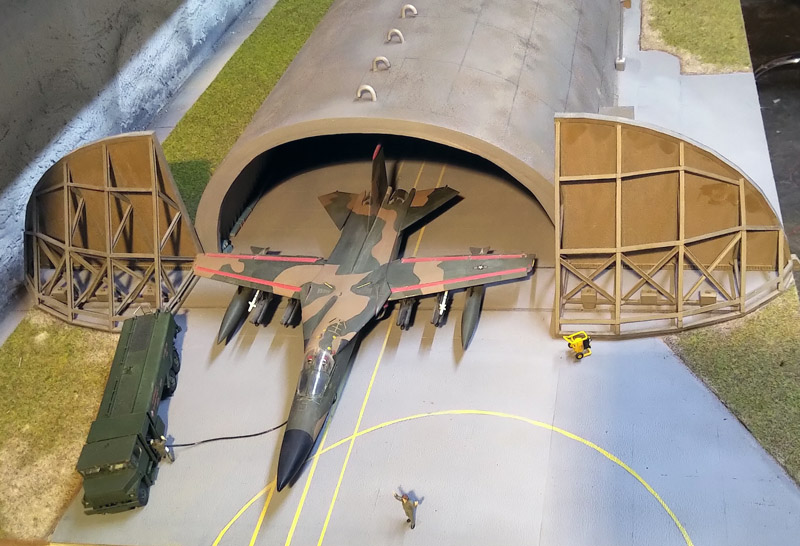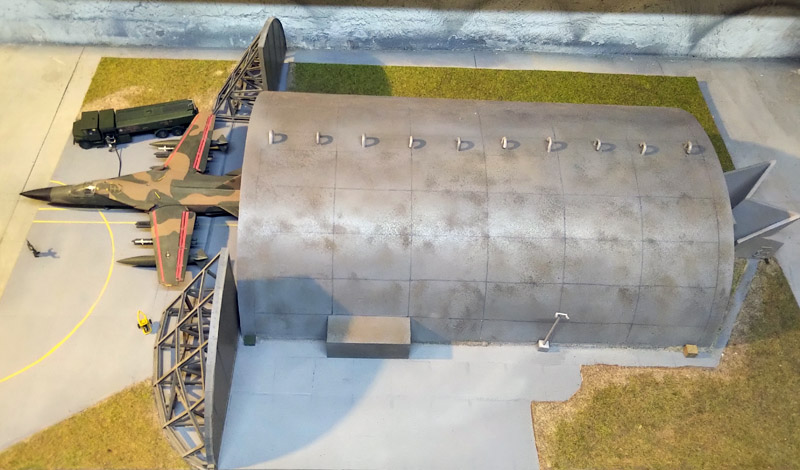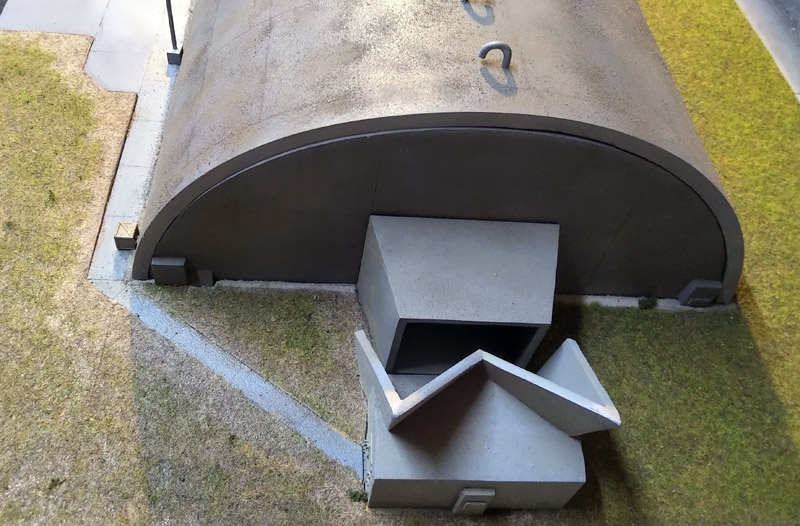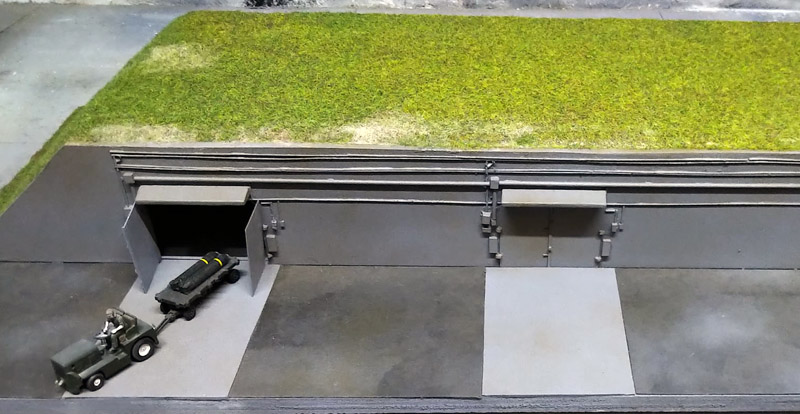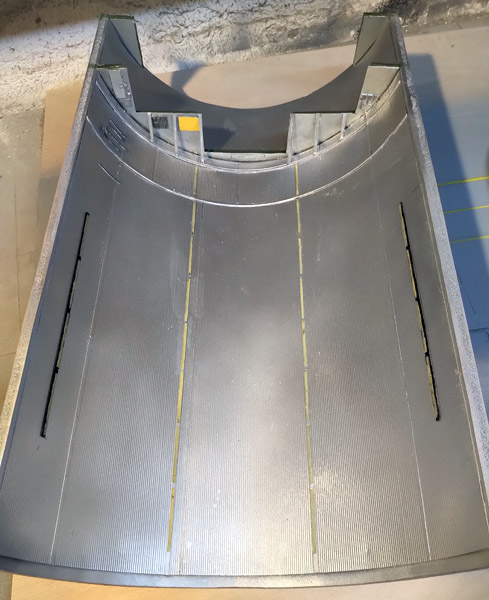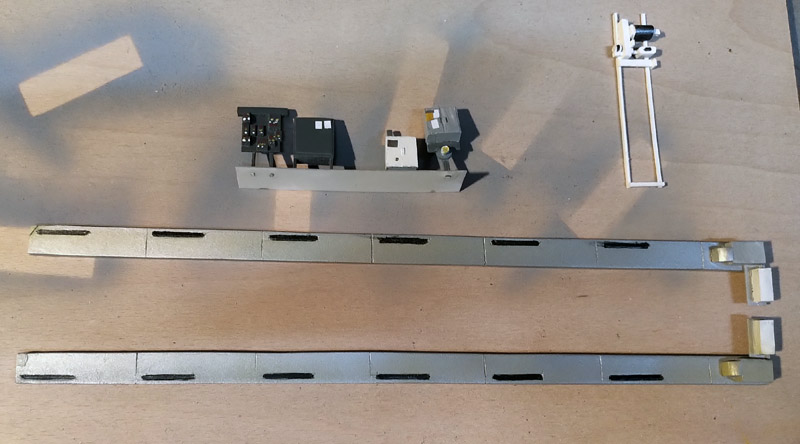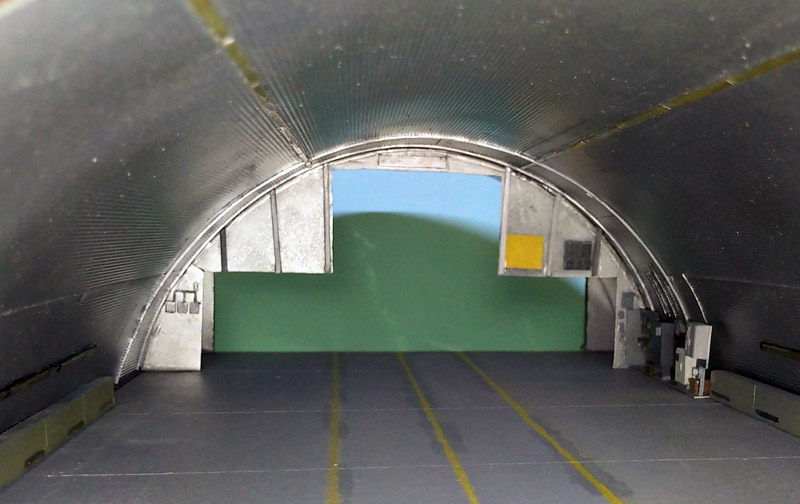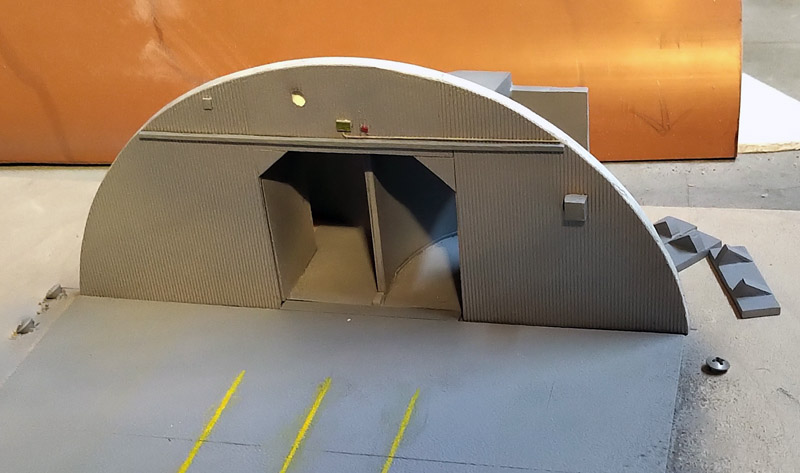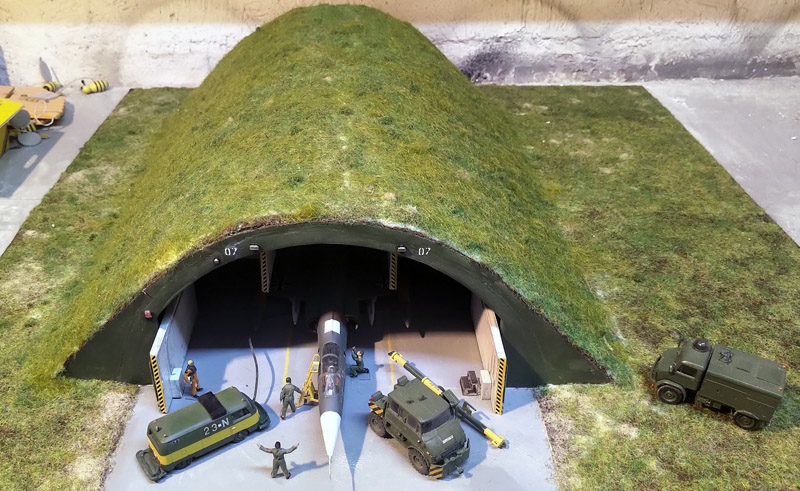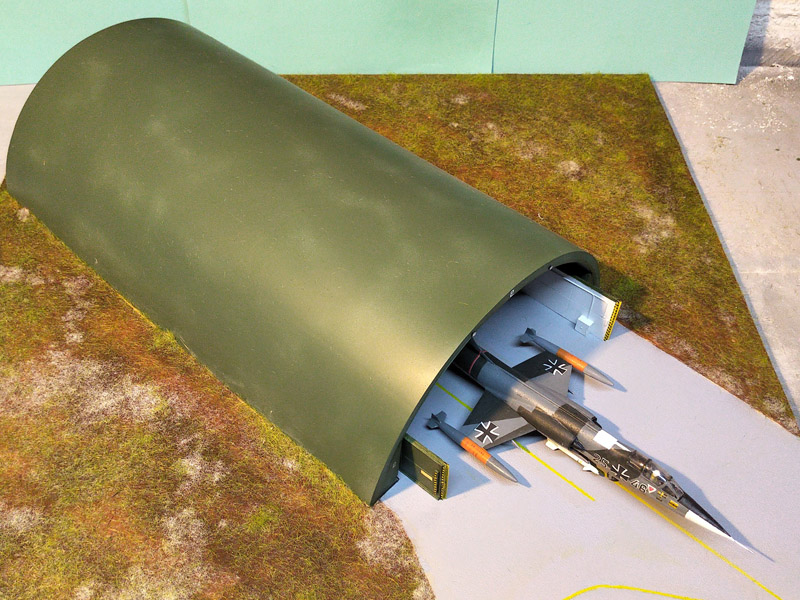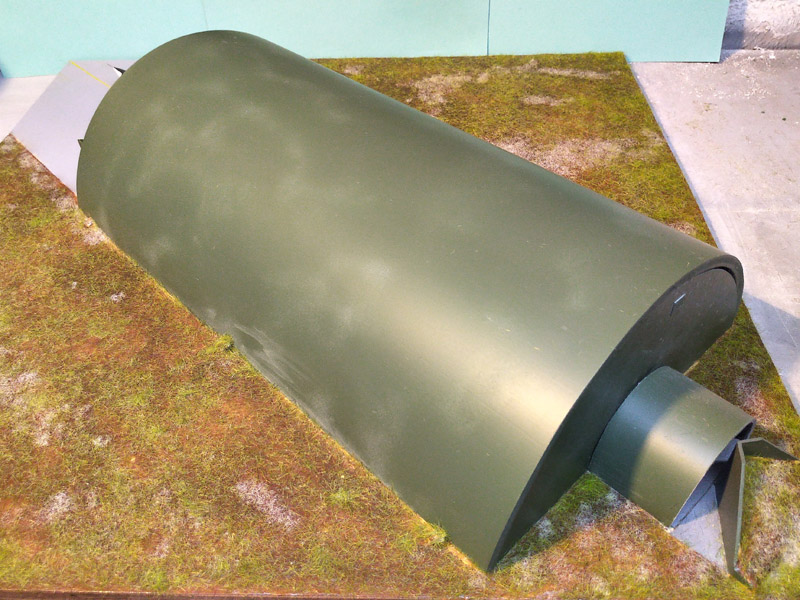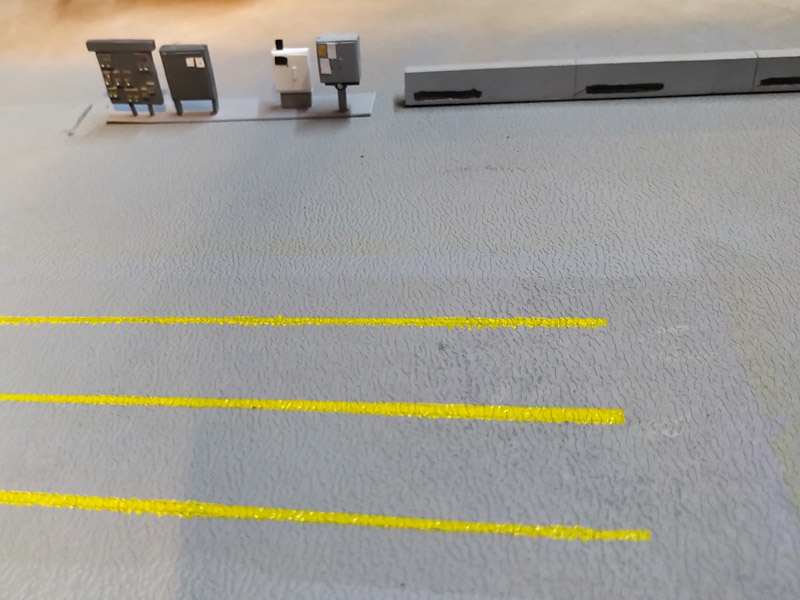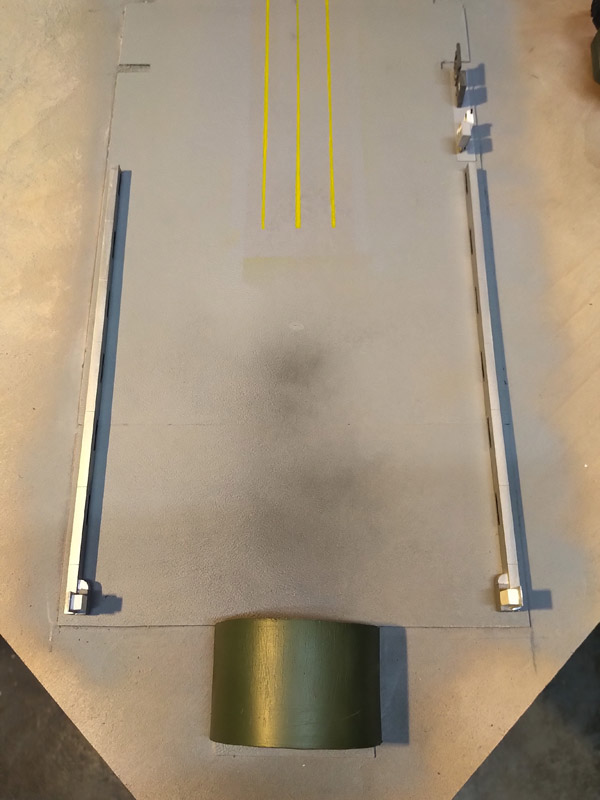The upper edge of the concrete pouring casings can be seen easily on the finished shelter, even many years later. On some shelters, the side edges of the casings can be seen too. It probably depends on the lighting conditions.
An area roughly 1x1 meters of the inner arch structure is cut out, to make room for the upper hinge of the clamshell doors. Just maybe this is the result of a design change to enlarge the door opening from 42' to 43', in an attempt to make the unmodified 1st generation suitable for the F-15. To compensate, a concrete patch of roughly 2x2 meters is added to the exterior.
My impression is that TAB-VEE exteriors were left in their natural color until roughly 2000, as witnessed by bases closed after the end of the Cold War (Bitburg, Hahn, Soestberg). You can now see painted shelters on Google Earth. On some bases they are all in the same color (for example: Ramstein dark gray, Aviano light gray), on other bases different colors are used (Incirlik: sand, mint green, brownish, beige-green). At Lakenheath the shelters still are in bare concrete.
A count on a Soesterberg construction photo shows exactly 50 arch rings. That makes a shelter length of 50 x 2' = 100' plus ~3".
On a Hahn 1st generation shelter, I count six whole and one partial arch element to make a complete arch. The arch elements are 12'8" according to my analysis, with 10" uncorrugated ends. As far as I can see, the arch elements within one arch are 'stacked' like roof tiles, apparently to prevent water ingress. The connection positions are mirrored for each arch.
Water leaking through the bolt holes of the arch elements creates interesting patterns on the interior.
There are door stops for the clamshell doors
The door beams of the Soesterberg 3rd generation shelters are square 180 mm H-beams (measurement courtesy of Barrie Raterink)
another interior detail is that many shelters have a 'vault' for nuclear weapons. See for example: U.S. Nuclear Weapons in Europe.
Fine Scale Modeler magazine, March 2016 issue, contains an article by French modeler Jean Paul Poisseroux about building a French shelter. The real size is approximately 14 x 27 meters, roughly similar to the USAF 1st generation TAB-VEE. He used a 19 cm thick-walled PVC pipe, and created the arches with thick electrical wire, wrapped in printed paper to simulate the corrugations.
